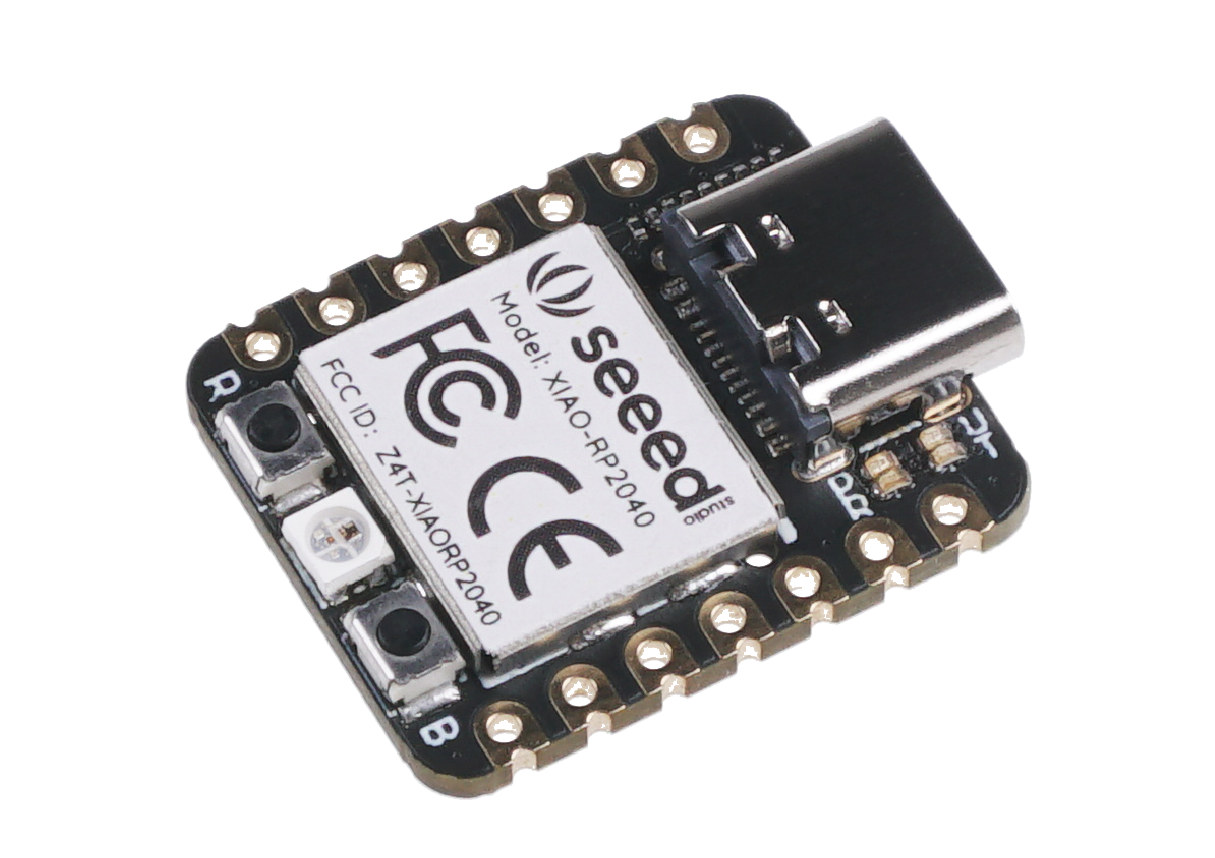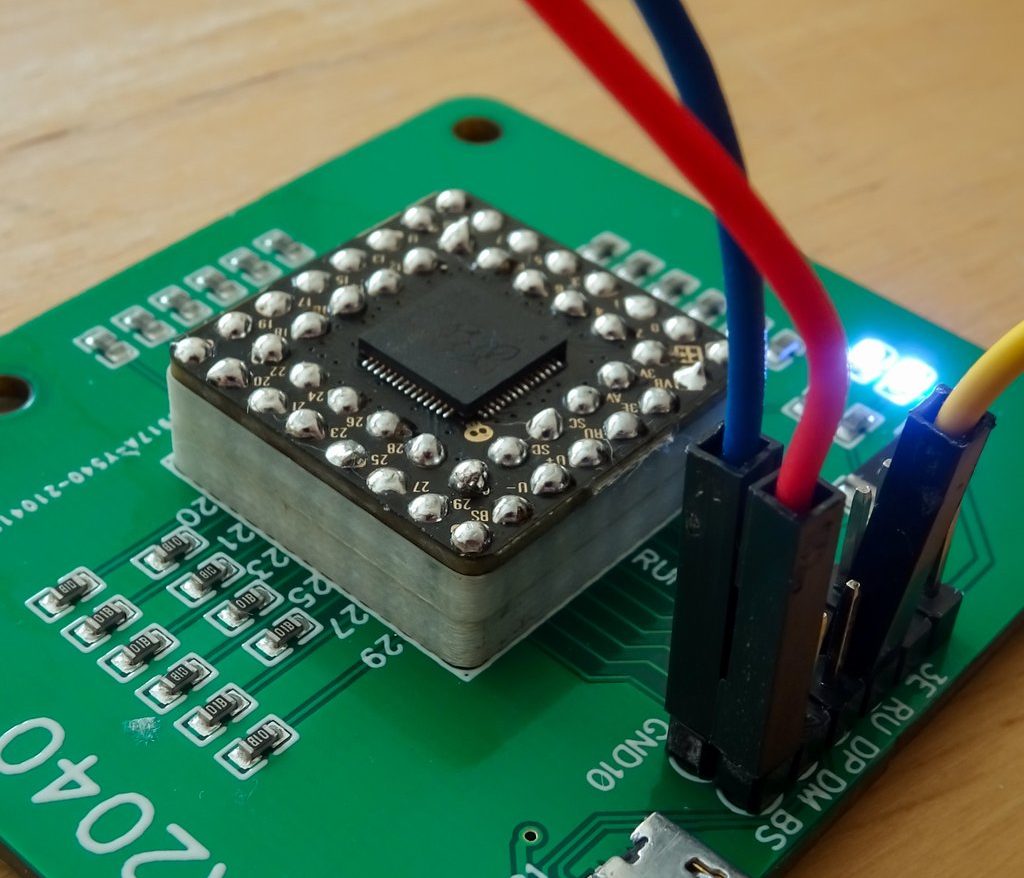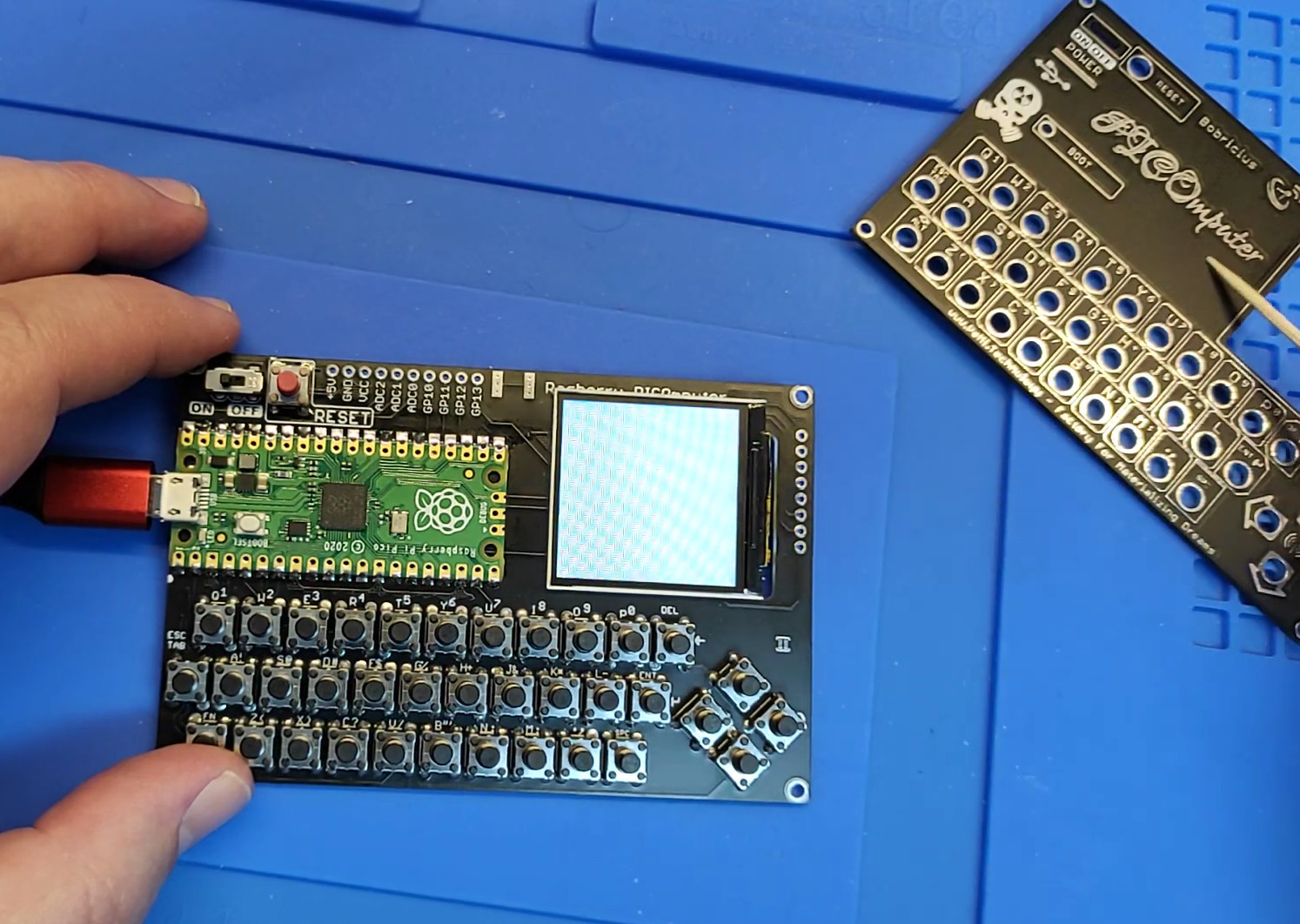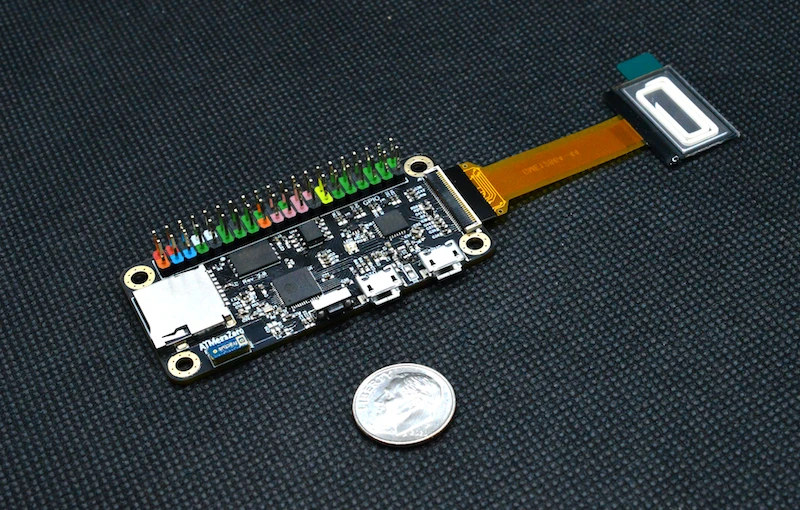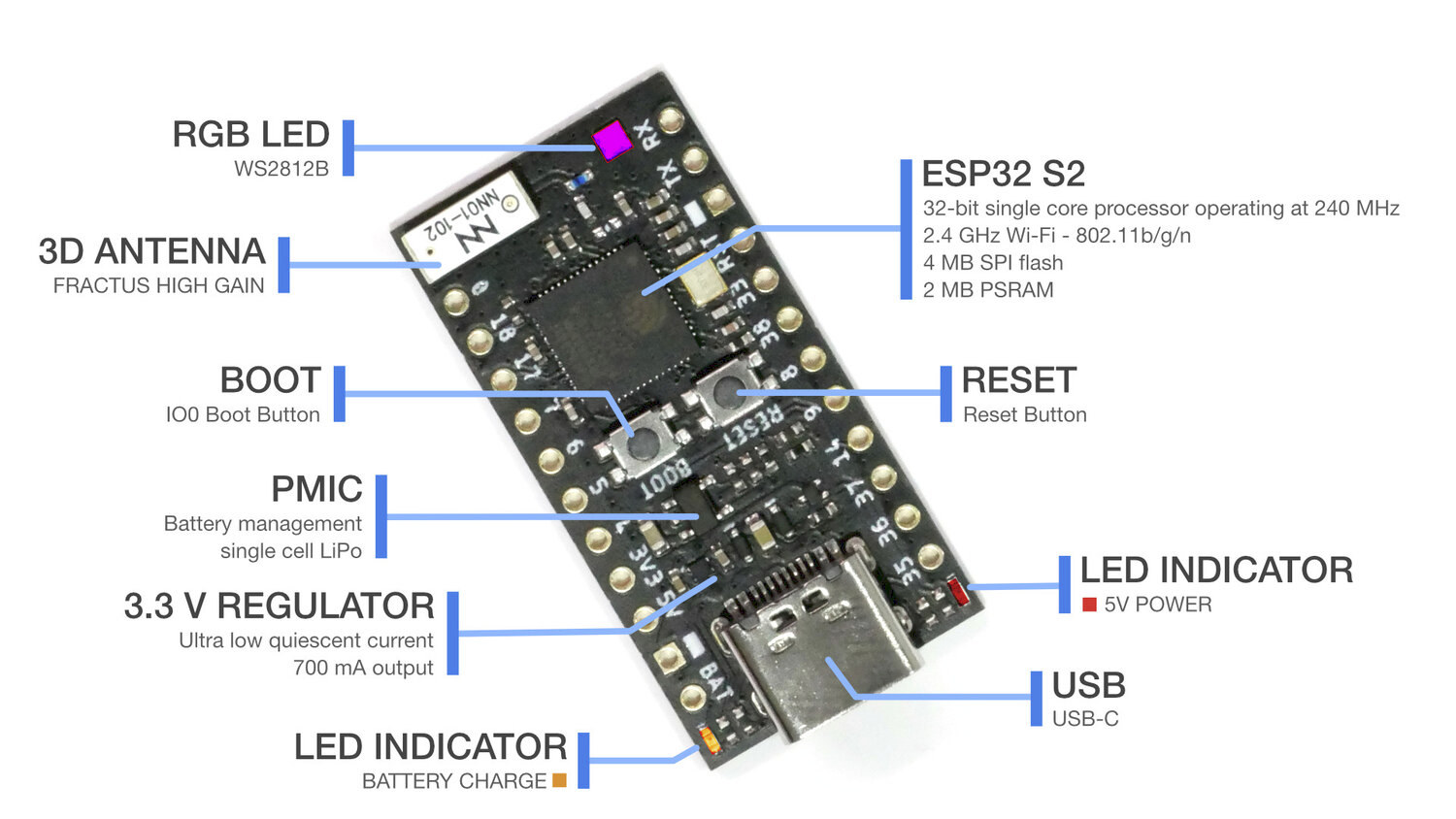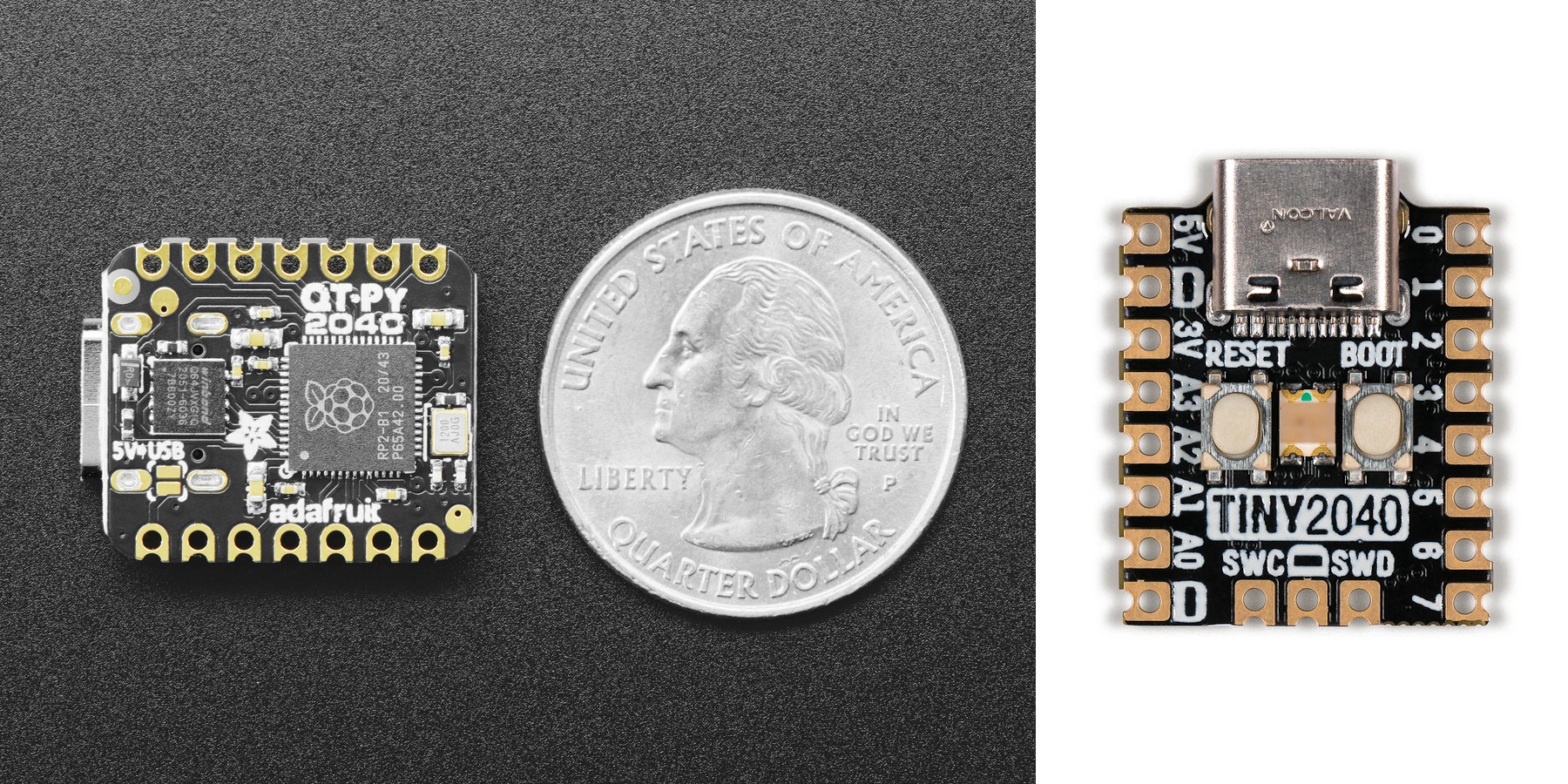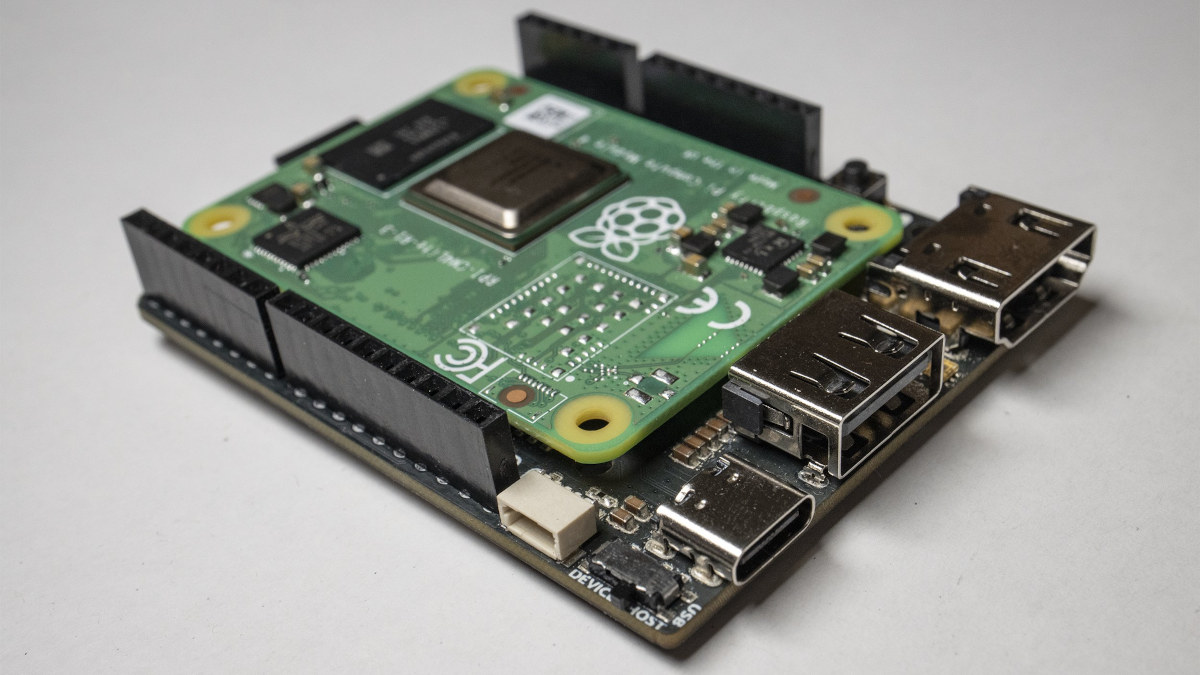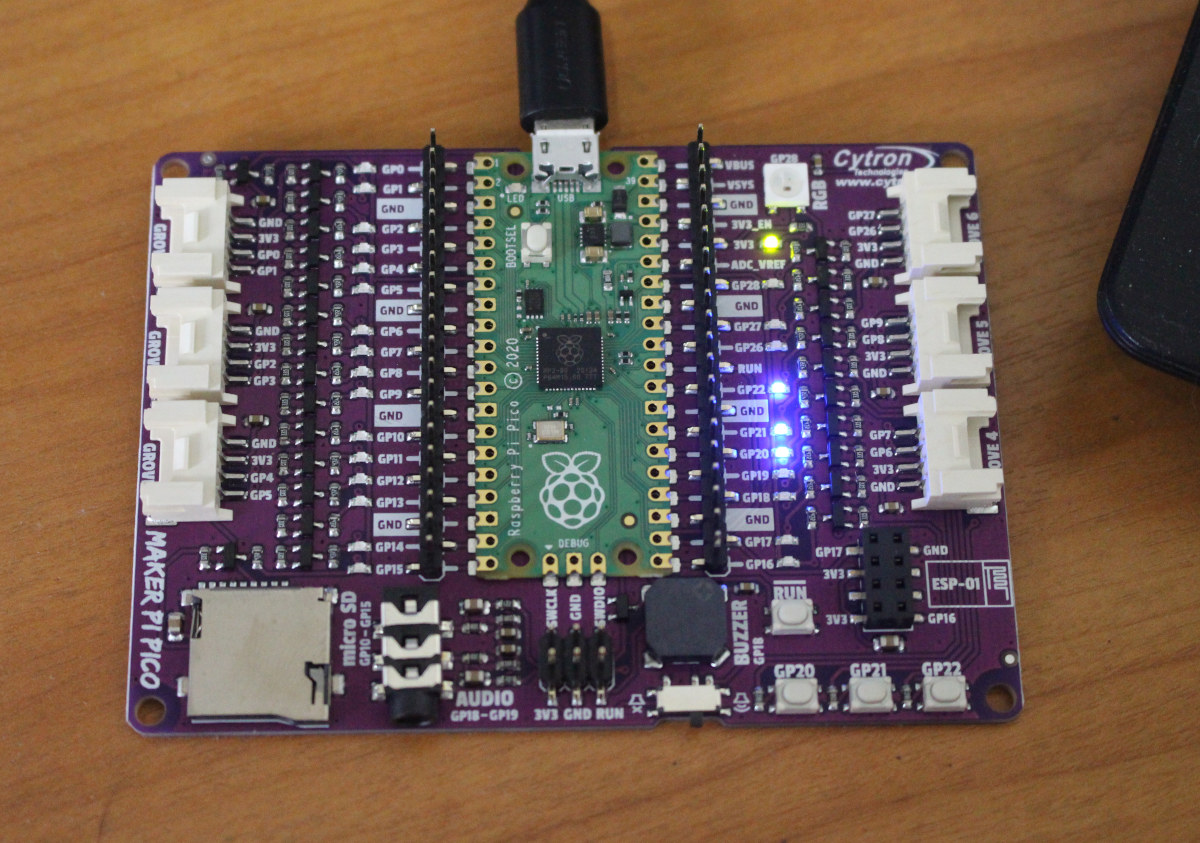Seeeduino XIAO is a tiny Arduino Zero compatible board with battery support that was launched last year with Microchip SAMD21G18 ARM Cortex-M0+ microcontroller at up to 48MHz. Seeed Studio has now launched the XIAO RP2040 board with the same form factor but upgrading to a more powerful Raspberry Pi RP2040 dual-core Cortex-M0+ microcontroller clocked at up to 133 MHz. XIAO RP2040 specifications: MCU – Raspberry Pi RP2040 dual-core Cortex M0+ up to 133 MHz, or even 252 MHz (48MHz default) with 264 kB SRAM Storage – 2MB SPI flash USB – 1x USB type C port for power and programming Expansion I/Os 2x 7-pin headers with 11x 4x analog inputs, 11x digital I/Os / PWM, 1x DAC, SPI, UART, and I2C; 2.54mm pitch 3.3V I/O voltage (not 5V tolerant) Misc – 1x user LED, power LED, 2x LEDs for serial port downloading, Reset Button/ Boot Button, RGB LED, SWD pads […]
PGA2040 is a Compact Raspberry Pi RP2040 Breakout Board by Pimoroni
Pimoroni is known for its development boards with a small form factor. PGA2040 is another compact breakout board featuring the Raspberry Pi RP2040 microcontroller. The board comes in the form of a Pin Grid Array (PGA) with RP2040 at its center. The PGA allows the accommodation of 48 pins around the perimeter of SoC on such a small footprint. After seeing some of the advanced RP2040 boards featuring wireless functionalities in the past few months, such as the Arduino Nano RP2040 Connect board, Pico Wireless Carrier board, and Wio RP2040 Mini development board, the PGA2040 is a simple board with only necessary components, thus making it suitable for compact, simple applications. However, this increases the complexity and efforts from users for interfacing additional components to implement advanced applications. Talking more about the necessary components on the board, it comes with a Crystal Oscillator, 8MB of QSPI flash, and a 3V3 […]
PICOmputer connects Raspberry Pi Pico to QWERTY keyboard, display, and optional LoRa module
Peter Misenko (aka Bobricius) has found an interesting use case for the Raspberry Pi Pico board with its PICOmputer, a compact terminal with a QWERTY keyboard, a small IPS display, and even footprint for an RFM95 LoRa module that would allow messaging/texting over LoRaWAN. Note the open-source hardware project is only offered as a kit with either the main board only, or the main board plus a gold or silver front panel, all without components, but fully assembled units are out of stock at this time. So read on, if you’re ready for some soldering and even some rework of the PCB, more on that latter. PICOmputer key features and specifications: Compatible with Raspberry Pi Pico board Storage – MicroSD card slot Display – Three types supported: 1.3-inch ST7789 IPS 240×240 display via 12-pin flex cable 1.54-inch ST7789 IPS 240×240 display via 12-pin flex cable ST7789 IPS 240×240 display via […]
ATMegaZero ESP32-S2 board supports OLED displays
EspinalLab ATMegaZero board was introduced last year with Raspberry Pi Zero form factor, the Arduino Leonardo compatible, 16 MHz Microchip ATmega32U4 microcontroller, and a connector for an optional OLED display. The company is now back with an update following the same form factor with ATMegaZero ESP32-S2 board equipped with a more powerful ESP32-S2 single-core processor @ 240 MHz with WiFi connectivity, and most of the same features, including OLED display support, plus a micro USB OTG port and an RGD LED. ATMegaZero ESP32-S2 board specifications: WiSoC – Espressif Systems ESP32-S2 single-core processor @ 240 MHz with WiFi RAM – 8MB PSRAM Storage MicroSD card 256Mbit (32MB) SPI Flash (note: only 16MB can be used for now due to firmware limitations) Display – 32-pin OLED display port compatible with 30-pin SSD1306 and SH1106 based displays Wireless Connectivity – 2.4 GHz WiFi 4 up to 150 MHz with 3D antenna USB – […]
TinyS2 ESP32-S2 board is designed for battery operation
Unexpected Maker has launched a follow-up to the ESP32 based TinyPICO board with TinyS2 board equipped with an ESP32-S2 WiFi processor featuring 4MB flash and 2MP embedded PSRAM. The new board is still designed with a LiPo battery charging circuit, comes with an onboard RGB LED, and while it is compatible with TinyPICO form factor, it has become a little longer with a 41 x 17.8mm footprint to accommodate for extra I/Os. TinyS2 specifications: WiSoC – Espressif Systems ESP32-S2FN4R2 single-core processor @ 240 MHz with 4MP SPI flash, 2MP PSRAM Connectivity – 2.4 GHz 802.11b/g/n WiFi 4 plus 3D antenna USB – 1x USB Type-C port for power and programming Expansion – 12 + 11-pin headers for up to 17x GPIOs, SPI, I2C, UART, ADC, DAC, 5V, 3.3V and BAT signals Misc – Boot and Reset buttons, battery charging status LED, power LED, user-programmable RGB LED that can be shut […]
The Tiniest Raspberry Pi RP2040 Boards – Tiny 2040 & Adafruit QT Py RP2040
The Raspberry Pi Pico officially board for RP2040 MCU has a lot of free space on the PCB. So when third parties made their own board they either added features like camera, display, and sensors as found on like on Arducam Pico4ML board, while others “cut the fat” to the minimum. Some of the tiniest Raspberry Pi RP2040 boards are Pimoroni Tiny 2040 & Adafruit QT Py RP2040, both of which come with the dual-core Cortex-M0+ MCU, a USB-C port, two buttons, some I/O ports, and not much else. Tiny 2040 Pimoroni Tiny 2040 specifications: MCU – Raspberry Pi RP2040 dual-core Cortex-M0+ microcontroller@ up to 133Mhz with 264kB of SRAM Storage – 8MB QSPI flash USB – USB Type-C port for power, data, and programming I/Os – 2x 8-pin castellated and through holes for 12 I/Os pins including 4x analog inputs, SPI, I2C, UART, 5V, 3.3V, and GND Debugging – […]
Piunora has the guts of a Raspberry Pi 4 with Arduino form factor, M.2 PCIe socket (Crowdfunding)
The Raspberry Pi 4 is a pretty cool board, but if you wished it was just a bit smaller, and you could use the PCIe interface exposed by the Broadcom BCM2711 processor more easily, Timon has designed Piunora carrier board for the Raspberry Pi Compute Module 4. The solution provides a board with the guts of Raspberry Pi 4 SBC but using the Arduino form factor including access to the six ADC pins, and an M.2 socket with the PCIe signal from the Broadcom SoC. Piunora carrier board specifications: SoM compatibility – Raspberry Pi CM4 module with Broadcom BCM2711 quad-core Cortex-A72 processor @ 1.5 GHz, 1 to 8GB RAM, optional 4GB to 32GB eMMC flash, optional wireless module with 802.11b/g/n/ac WiFi 5 and Bluetooth 5.0 Storage – 1x MicroSD card socket (for the OS when using Raspberry Pi CM4Lite system-on-module) Video Output – 1x HDMI 2.0 port up to 4Kp60 […]
Maker Pi Pico STEM board mini review with CircuitPython
In my early list of third-party Raspberry Pi RP2040 boards, I shortly mentioned Cytron Maker Pi Pico baseboard for Raspberry Pi Pico that exposes all pins via female headers, includes LEDs for all GPIOs pin, six Grove connectors, three user push-buttons, one RGB LED, a piezo buzzer, an audio jack, a MicroSD card, and an ESP-01 socket to add WiFi connectivity. The beta version sold for $5, and at the time I missed that included Raspberry Pi Pico board as well, so basically you got a free baseboard. The Malaysian company has now sent me a review sample to play around with, so let’s have a closer at the hardware and code samples for the board. Maker Pi Pico Unboxing and Specifications I received the board in Cytron package together with a pinout diagram for Raspberry Pi Pico, and we can see the latter is already soldered to Maker Pi […]


